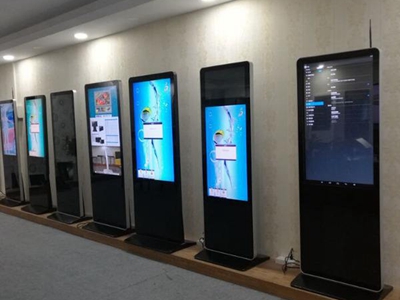How To Make Cylinder & Curved LED Display Screen with Flexible LED Display Modules
Cylinder & Curved LED Video Wall System
*Cylinder & Curved LED Display unit – module’s introduction & important index.
*Cylinder & Curved LED Display bracket configuring timeline.
*Detailed work we design for the assembly and combination.
*Determine other accessory or enclosure for Cylinder & Curved LED Display.
*How to customize your own cylinder & curved LED display.
*Your cylinder bracket accurate dimensions for size, shape, curve and design due to each loss will get this program frustrated.
*Each component has to be determined by customer’s side, and we’ll recommend whatever we could help to figure out the cost and quality due to our customer-centric mission at the same time.
*Replacement planning and maintenance manual will be completed for each customer.

After you’ve read all above, now you can see the individual of module groups tagging at different prices. What sort of modules are you going to determine before the application? What’s the most important index for them? We are going to make an analysis:
1. What’s the definition of the pixel pitch, please refer to the link, literally we are defining P2 as it will keep the audience’s chance to view your content in colors and imagery, the least distance will be you have to stand at 2-meter away from the screen. P3 means you have to stand 3-meter away from the screen, and so on.
2. Module’s size and configuration, it’s optional that you could rely on us for the resolution listings, or make a decision of how many of modules you will buy for Cylinder & Curved LED Display. However, if it’s not decided yet about the accurate dimension measurement of the object like column, you might have to take the module size as one of the important issues due to module is the basic unit to assemble a whole cylinder & curved LED display screen and it also means you have the determination of the size for your program. And so we can make the conclusion for you to design the bracket about this cylinder & curved LED display screen.
To make sure you are having a better understanding of this issue rather than confusion, we are going to take an example for more details.
E.g: such a customer need cylinder LED display screen, P2.5 for the module option, perimeter’s width – 1 meter, height 2 meters about the cylinder. It’s a simple math question here, sums up the size of object surrounding around the cylinder column, that is Area: π(3.1415928) * D(1 meter) * Height(2 meters) = 3.1415928 * 2 (square meters), considering the P2.5 module size 0.32 * 0.16 (square meters),
3.1415/0.32=9.817
2/0.16=12.5
According to the division’s output, we could easily get that this customer will need 9.817 * 12.5 pieces of P2.5 module, unfortunately, the module could not be divided smaller than it could be presenting currently, it also will tell the customer that he/she will have some choices or resolution below:
A. Adopting 10 * 13 pieces of P2.5 module, you will get a new cylinder instead of your target, the one is going with perimeter 3.2 meters, diameter 1.018 meters and 2.08 meters in height about this new cylinder.
B. Using 9 * 12 pieces of P2.5 module for plan B, the processing is similar to plan A.
The rest two choices we are not going to list here as we do not recommend, nevertheless, both are available for us to create for you.

3. Once you have determined the module quantity and layout at the same time, our tech support team will carry over the steps of processing to let you know your project will be launched.
i: Technician will depict the scripts of the original configuration based on the sizing.
ii: You will have to negotiate with tech support about the script and confirm it.

iii: We are going to produce the bracket in associate with the accurate data of script’s remarks.
iv. All modules will be put and lay down on the bracket at some day.
v. Your cylinder will be shipped out after assemble, the post-service and maintenance tips will be ensured again.
May everything is helpful for your cylinder LED display, and start your cylinder LED display right here, staying with us.
P.S some pics we are displaying right above may be quoted from web, if property offended, contact with us.

For local installation, which we provide field installation service, the structure and modules and other accessories are provided in separate part. And will install at the scene directly.
For project contractor abroad that has rich experience at installation, the structure that can make at local abroad, and install the screen at local. We only provide the LED display modules, drivers, control system, wires and cables. This will help to save cost and contractor can adjust according to the real need.








